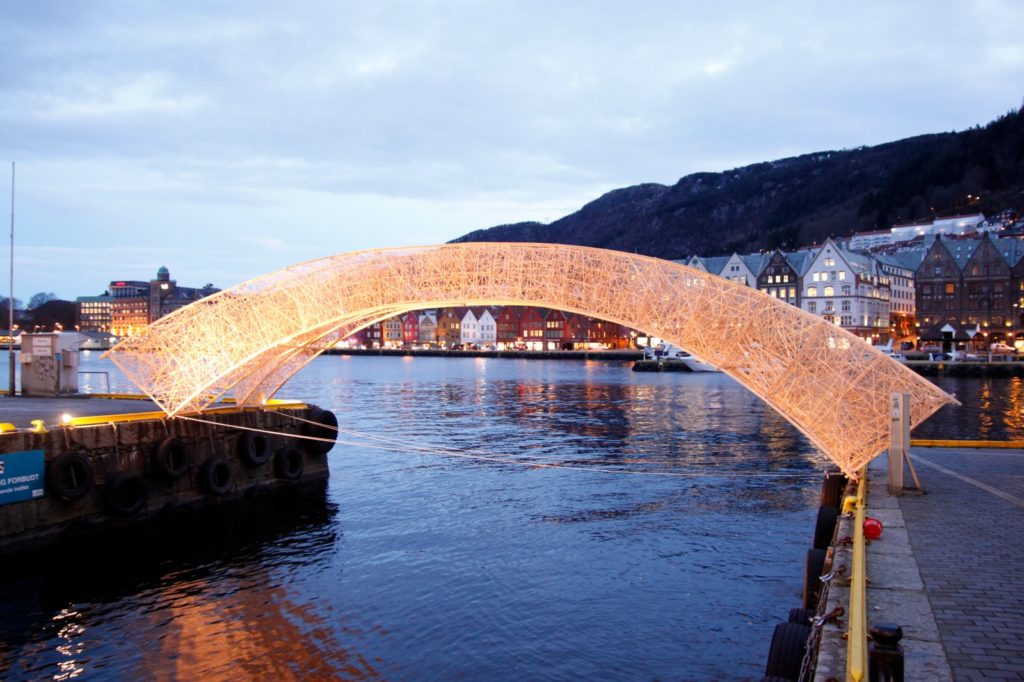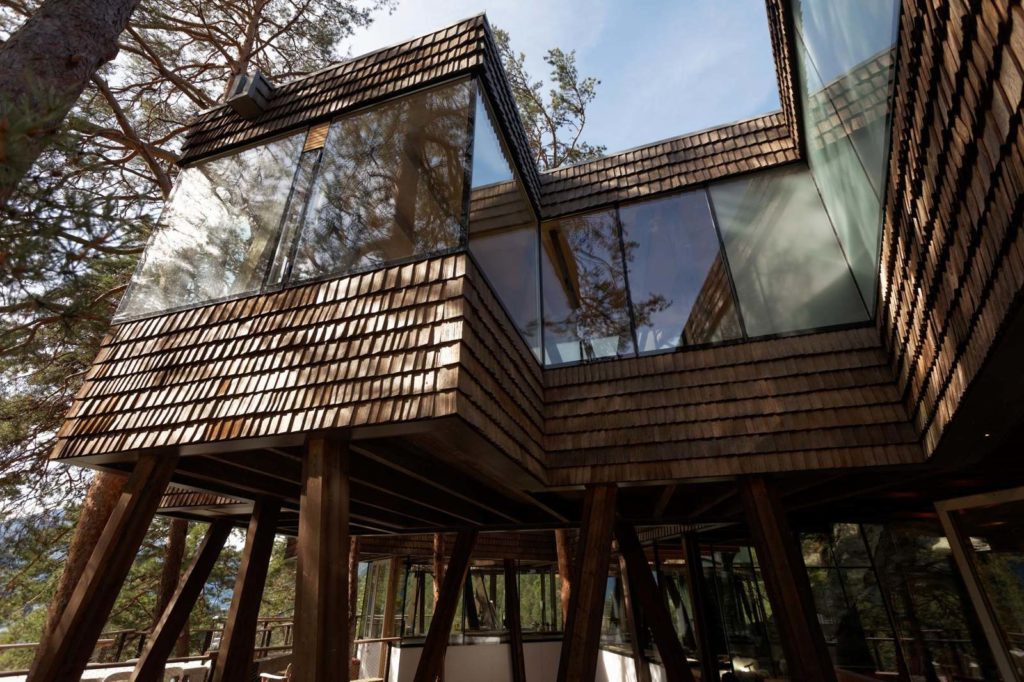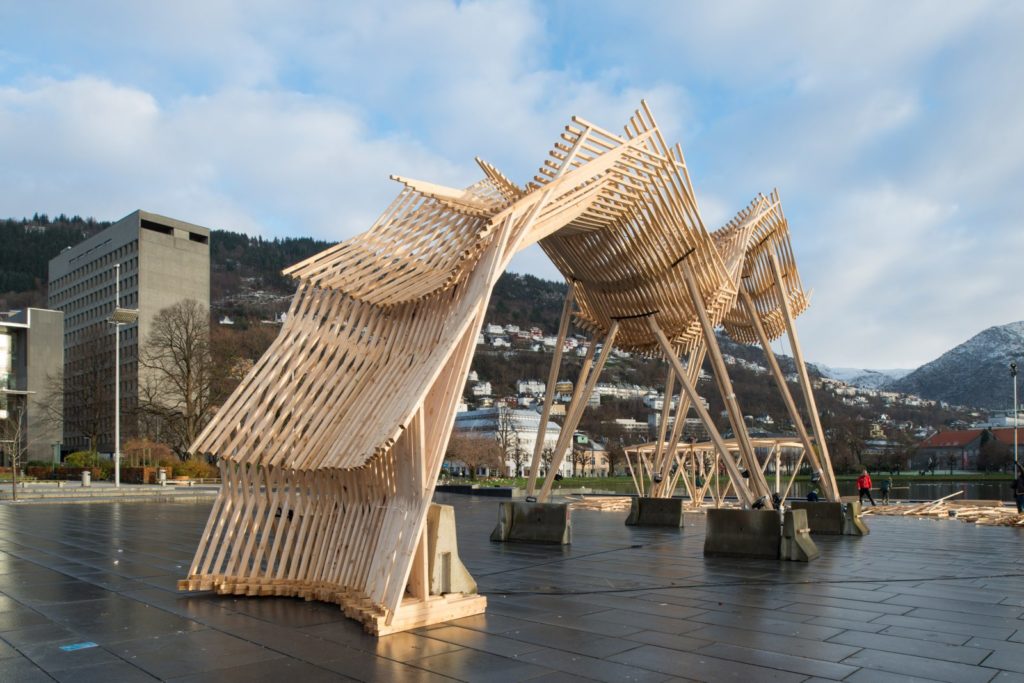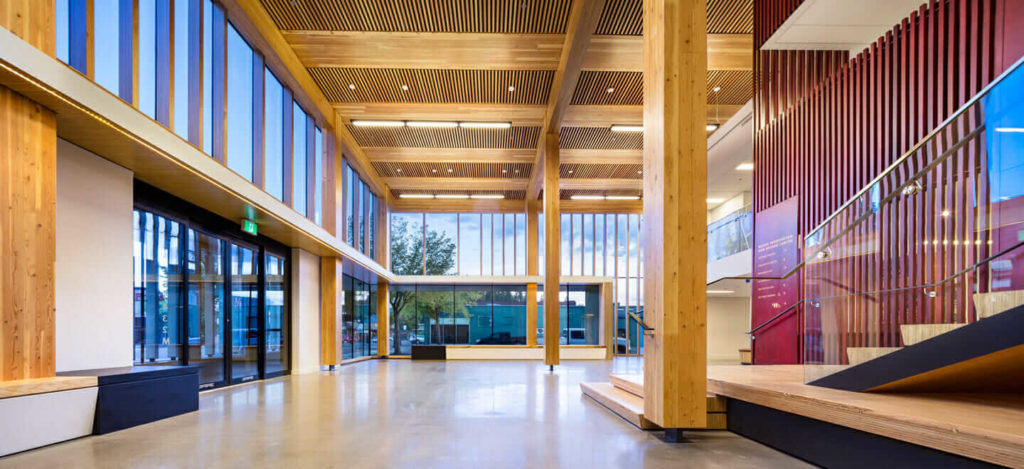During the last decade architect Petter Bergerud has carried out experimental and artistic workshops together with colleagues, craftsmen and a vast number of students. The outcome is a book presenting the structural and geometric challenges, the work processes and the final artistic results from a total of nine workshops.
If used correctly, wood can be one of the most sustainable materials. It comes from a renewable resource, it is a clean material and it can be very durable. Timber materials act as a carbon store, and this makes them more sustainable; the longer they are kept in use the more times they are reused.

Related: Exporting Norwegian Architecture
Timescale of an oak tree
“An oak tree grows for 300 years, lives for 300 years and takes 300 years to die. This is a timescale that is alien to today’s production and consumption society,” says professor Petter Bergerud at Bergen Academy of Art and Design in Norway.
The book opens with an introduction, Renewing Tradition, describing the material wood, its material properties and its use in a historical context. This is followed by a philosophical commentary on the meaning and value of Nothing.

Experimental Wooden Structures in Norway
Sustainable use of timber materials can consist of specifying the dimensions based on what the timber is to be used for, using timber from non-traditional tree species, building durable structures, designing with a view to subsequent dismantling, using recycled wood and specifying certified timber.
Related: Norwegian Stave Churches

As the call for sustainable material solutions grown ever louder and the environmental impact of manufacturing is a more urgent concern than ever, renewable materials such as wood are back in the spotlight. As an organic substance, with roots (literally) in the natural world, wood has a richer narrative history than the synthetic materials that have come to dominate the current age of consumption. It is an anchor to nature; every wooden object carries with it the suggestion of the tree and thence the forest from which it came.
Beauty matters
The last chapter in “Experimental Wooden Structures” is a postscript entitled Beauty Matters and Learning by Doing. Bergerud’s projects are built on his philosophical, intuitive and artistic way of thinking. The synthesis of the artistic will and energy and the understanding of structural mechanics and craftsmanship have together created some impressive large-scale projects in the city of Bergen, which are beautifully described in this book.

The project Expermental Wood Structure run over a period of seven years.
Related: Norwegian Architects Conquer the World
About Bergen Academy of Art and Design
Based in Norway’s unofficial capital of design, the Bergen Academy (KhiB), is one of the country’s most respected higher-education institutions, admired internationally for producing generation after generation of the nation’s most accomplished designers and artists. The Academy is known for its interdisciplinary approach, design-as-solution methodology and pronounced emphasis on the importance of research and collaboration.
Experimental Wooden Structures in Norway, written by Tor Kjolberg


